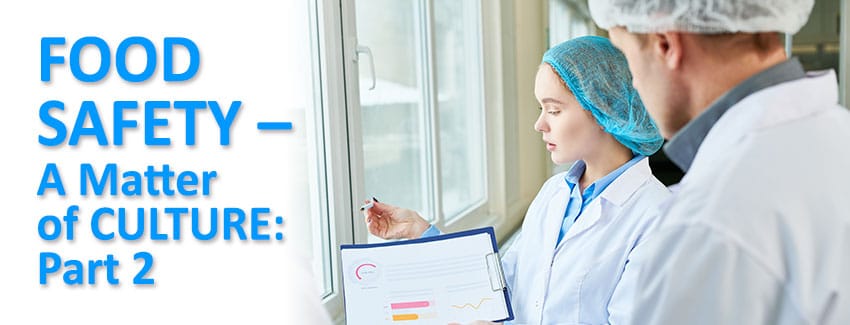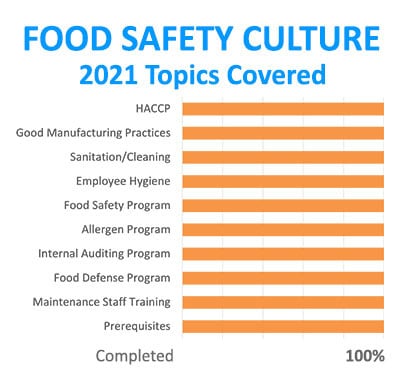
How to successfully maintain a ‘food safety culture’
In part one of this blog, we discussed ways in which a food safety culture could be cultivated as part of the Global Food Safety Initiatives (GSFI) requirements. Creating and maintaining a ‘food safety culture’ is not only a requirement, but an essential initiative in providing safe and quality food products.
Once the culture of a manufacturing facility expects and rewards food safe behaviors with a ‘top down’ approach, this integrity must be maintained and measured. With the commitment of top management and the trickle-down effect of a food safety culture, an organization can focus on training employees not only the importance of food safety, but the reasons why it is important. Knowledge is key when instilling a commitment to food safety.
The mutual benefits of good training and knowledge
Educating your workforce and top management in the steps in creating safe, quality food is essential to manufacturing. To further this understanding:
- Every employee needs to understand ‘why’ processes are done – this assists them in taking personal responsibility of the safe food process.
To reference the hand-washing example in the previous post, you can train your employees to properly wash their hands when working in a food handling area. However, if you go one step further and teach employees ‘why’ proper hand-washing techniques are done – to significantly reduce the risk of microbial contamination of a product that could possibly make consumers ill – you empower them to be a partner in your food safety culture.

Advertising the culture of food safety
As creators of the food safety initiatives in the manufacturing facility, we may think we’re good at promoting our processes and measures for food safety, however, many times we don’t do enough to ensure all employees get the information.
Creating a culture that encourages employees to practice food safety integrity requires employees to first understand it’s okay to come forward with their concerns because there won’t be any negative ramifications for them. Be sure to:
- Publicly acknowledge employees who bring food safety issues to management.
- Reward them, whether the issue was large or small.
- And above all, correct the issues when they are identified to management.
This shows your employees their concerns and observations are important to the overall food safety of the products you manufacture.
Make it a priority to discuss your ‘food safety culture’ regularly with employees.
- Use terminology that helps employees understand its importance.
- Call out the value of food safety any chance you get, so everyone understands it’s not a superficial matter.
- Reinforce that food safety is a company value shared throughout your organization from the CEO to the line workers.
Measuring a ‘food safety culture’
One of the biggest challenges to the ‘food safety culture’ initiative is: “How do you measure a culture?” This question is raised frequently when we get audited by our customers, regulatory bodies, and certifying bodies. Here are some of the ways we illustrate our food safety culture at Tree Top:
- Having manufacturing employees discuss food safety as a routine part of the language used with auditors.
- Having a clear line of communication from employees to management, so that any possible food safety issues can be identified.
- Documenting these conversations and using them as proof that food safety conversations and improvements are being raised and addressed.
- Ensuring policies and procedures reflect the food safety culture.
- Addressing food safety in both the quality documents and manufacturing documents, as well.
- Food safety is not just a quality initiative – it’s a manufacturing initiative.
ALWAYS KEEP IN MIND: Quality personnel only verify the quality and safety of a food. Manufacturing is where quality and food safety are initiated.
Walk the walk
I would like to reiterate from last month’s post how important it is that everyone exhibits a commitment to food safety. Managers must be as much or even more engaged in their company’s food safety values than line workers are. People learn best what is modeled for them. We must continue to provide the education, training, and modeling to ensure our food safety culture is cultivated, measured, and maintained.
If you have examples of how your company is practicing a food safety culture, I would love the hear about them. Please email ideas, questions, or comment to kristine.mcdonald@treetop.com




